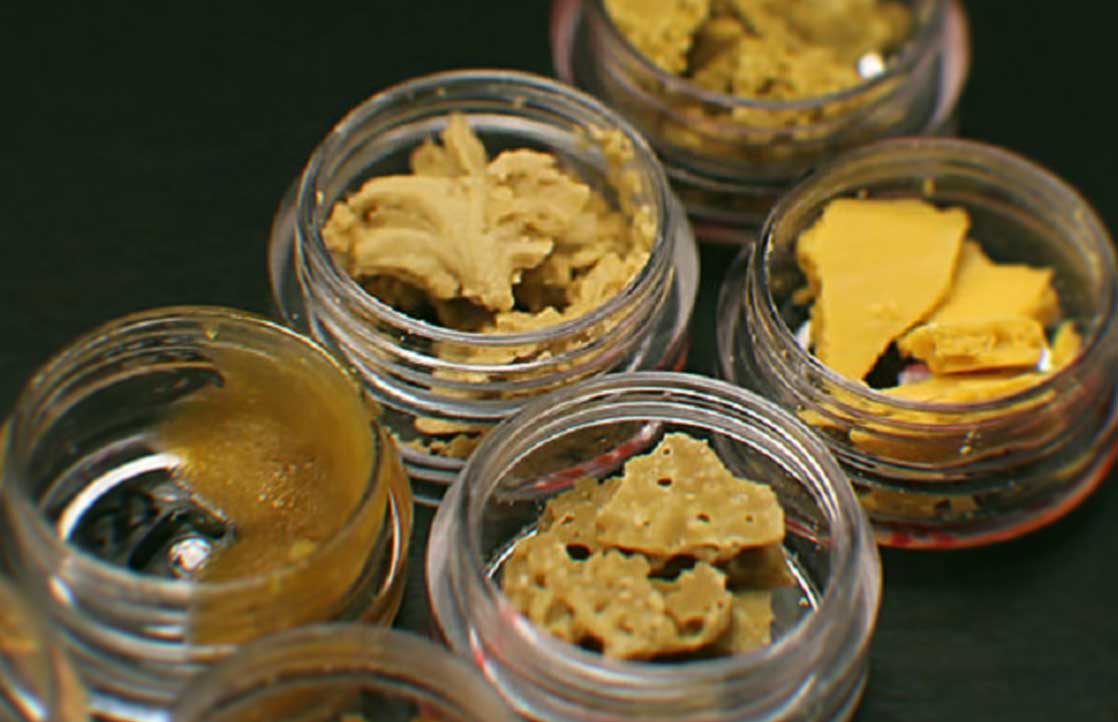Tinctures, oils, wax, BHO, shatter… those are just a few forms of marijuana concentrates (also called extracts), which are a concentrated form of the active ingredients of marijuana (cannabis). They are created by extracting these medical ingredients, including cannabinoids and terpenes, and discarding the remaining plant material. The result is a highly concentrated form of the active ingredients that can be vaped or used in edibles.
What are the active ingredients of concentrates?
THC and CBD are the main active ingredients in cannabis plants that are extracted to create concentrates, but terpenes determine the flavors and smells of different cannabis strains and have their own medicinal benefits. Depending on how the ingredients are extracted from the plant, some concentrates may lose some or all of the plant’s terpene content.
How are concentrates made?
THC and CBD (and other cannabinoids) are extracted from the cannabis plant either with solvents or without solvents (solventless). Common solvents include carbon dioxide (CO2), butane hash oil (BHO), ethanol, and hexane, while typical solventless methods use heat, pressure, or water.
Is solventless extraction always better?
Extraction methods are a hotly debated topic. Some argue that certain chemical solvents can leave behind residue that makes the finished product less pure or safe. Others argue that certain solventless methods, such as heat, can reduce cannabinoid levels or strip out the terpenes.
What do consistency and color tell me?
Concentrates are basically oils that can range from thick and sticky, like wax, to thin and watery, depending on the extraction methods used. In general, lighter color and greater transparency indicate fewer impurities and a cleaner flavor.
What kind of concentrate is best for me?
That depends on many factors and preferences, such as where you live (what state), how you use it (vaping, edibles, topicals), your manual dexterity, what your dispensary offers, and what equipment you use (vape pen, vaporizer, dabbing equipment, glass pipe, household oven, etc.).
- Tinctures, the most liquid oils, are extracted using alcohol or glycerin and are used orally, typically a few drops in a medicine dropper. They are most effective when used under the tongue where they are absorbed almost immediately into the bloodstream, rather than through the digestive tract.
- Oils, slightly thicker than tinctures, are often vaporized (vaped) to deliver the highest levels of cannabinoids (THC and CBD). Examples include CO2 (carbon dioxide) oil and Rick Simpsons oil. Many patients find success using oils topically (applied directly to the skin) to treat certain conditions.
- The thickest, most opaque, and more solid forms of oils are most often vaped or dabbed. Higher terpene levels often contribute to the increased density. Examples include shatter, wax, crumble, budder, pull-and-snap, and others.


